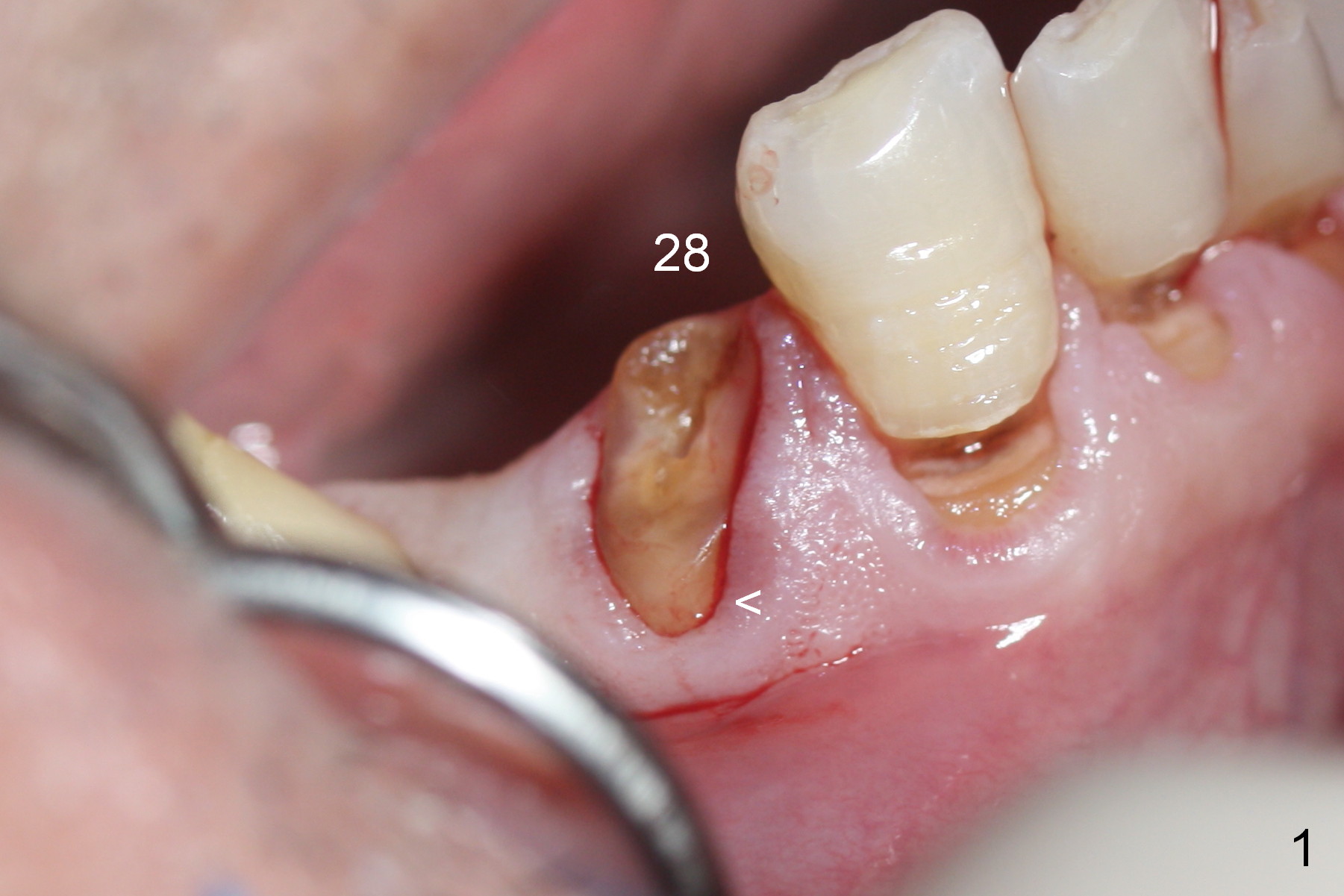
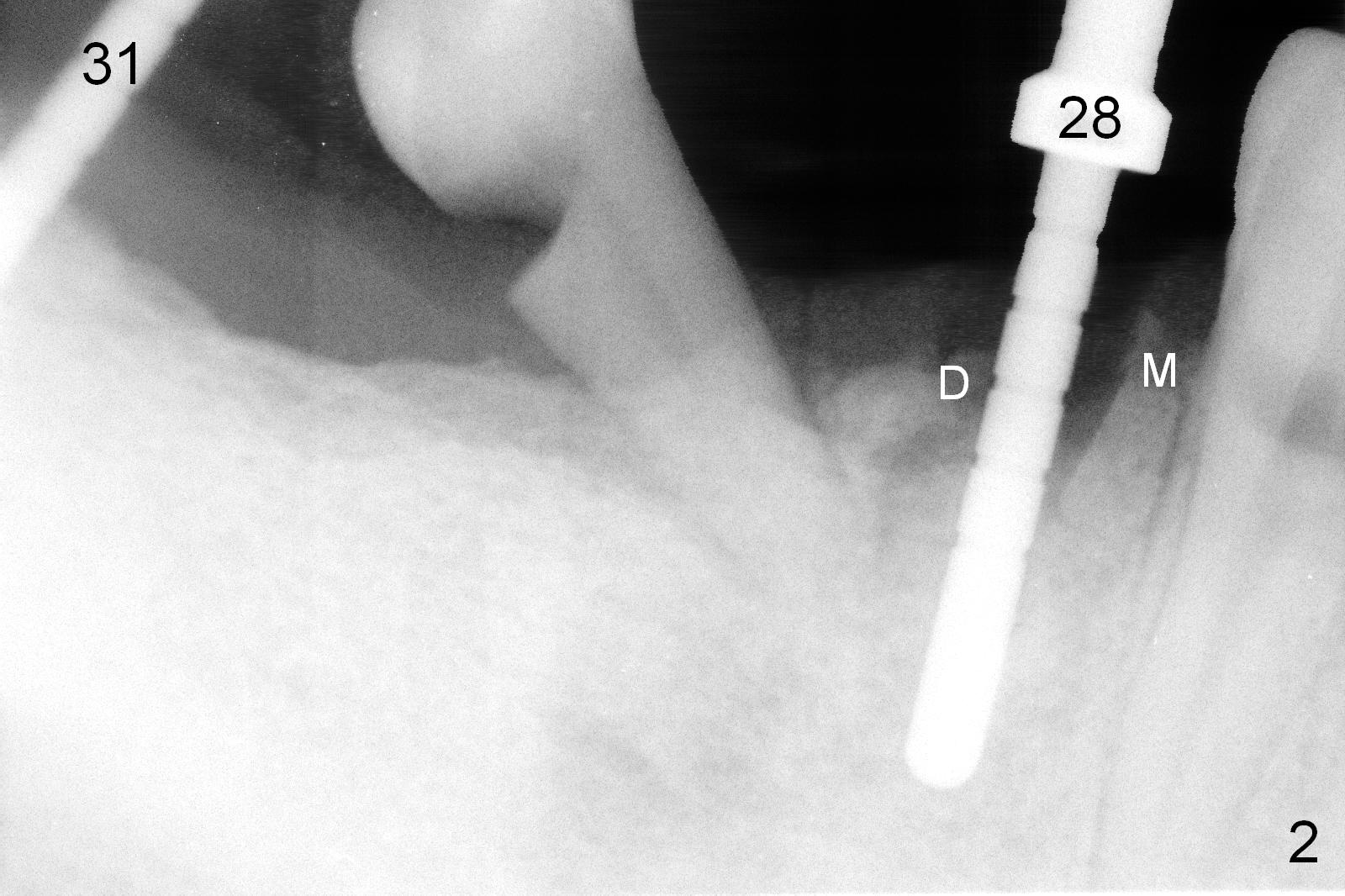
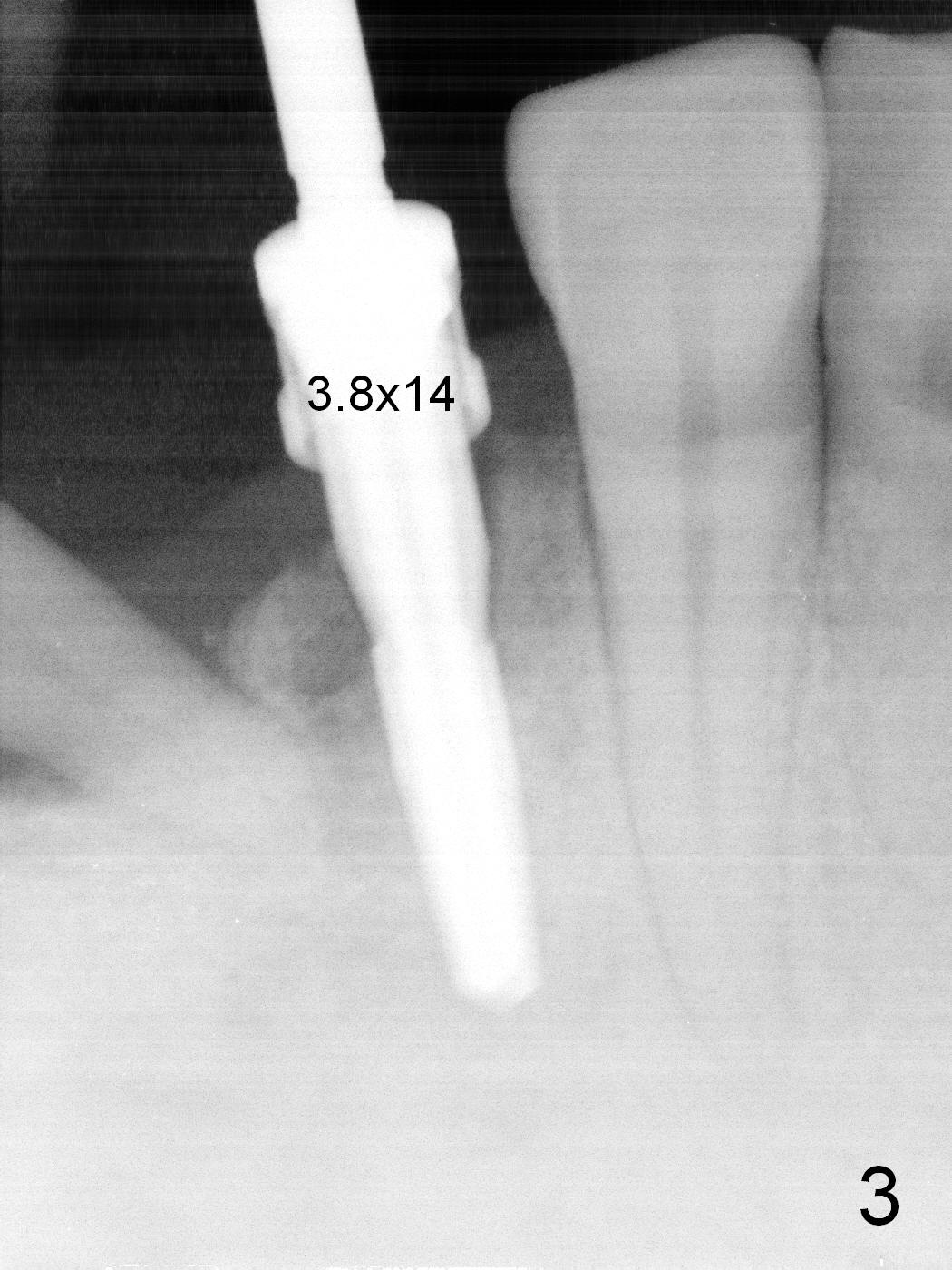
%20(abutment%20trimmed).jpg)
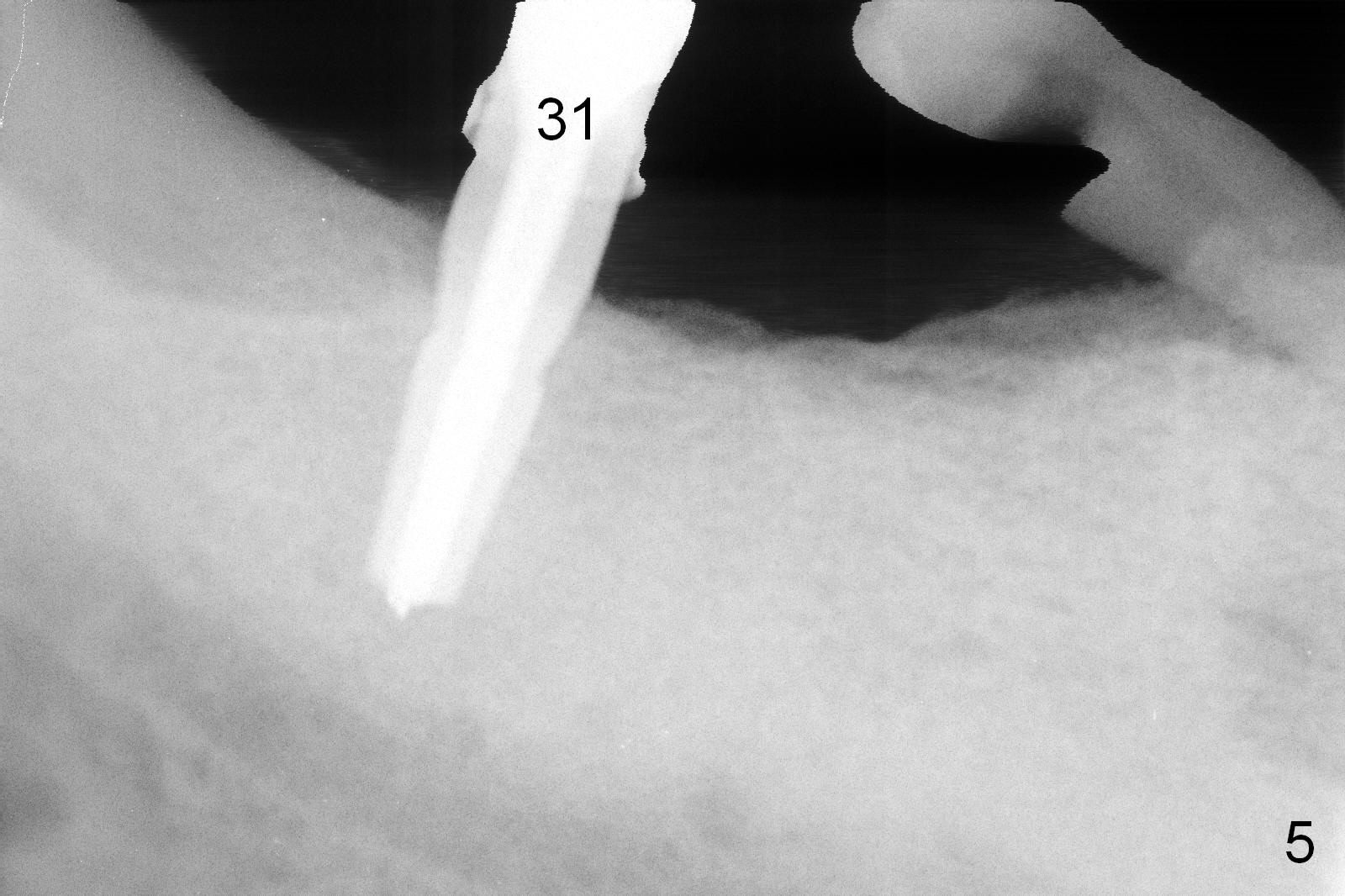
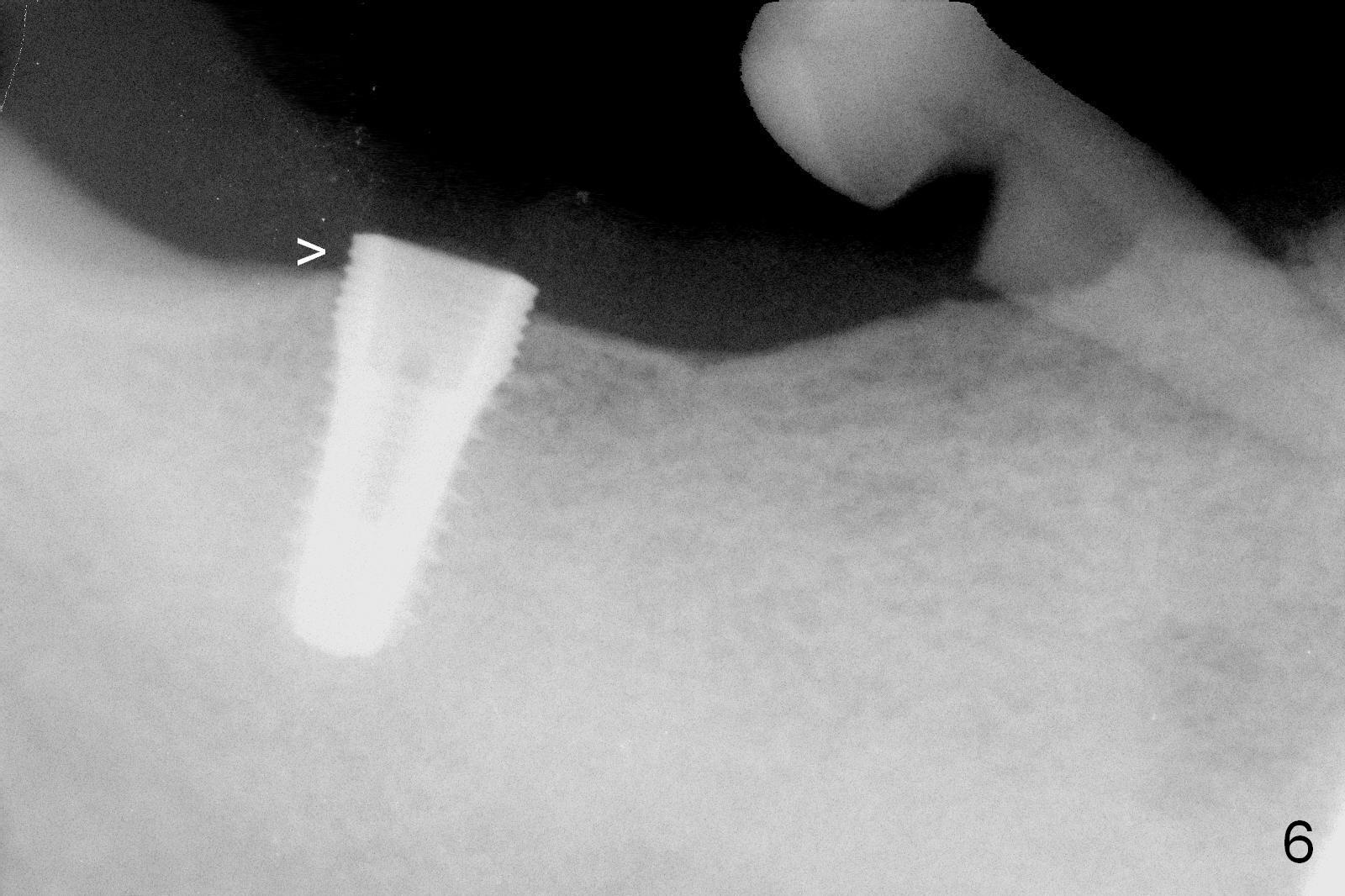
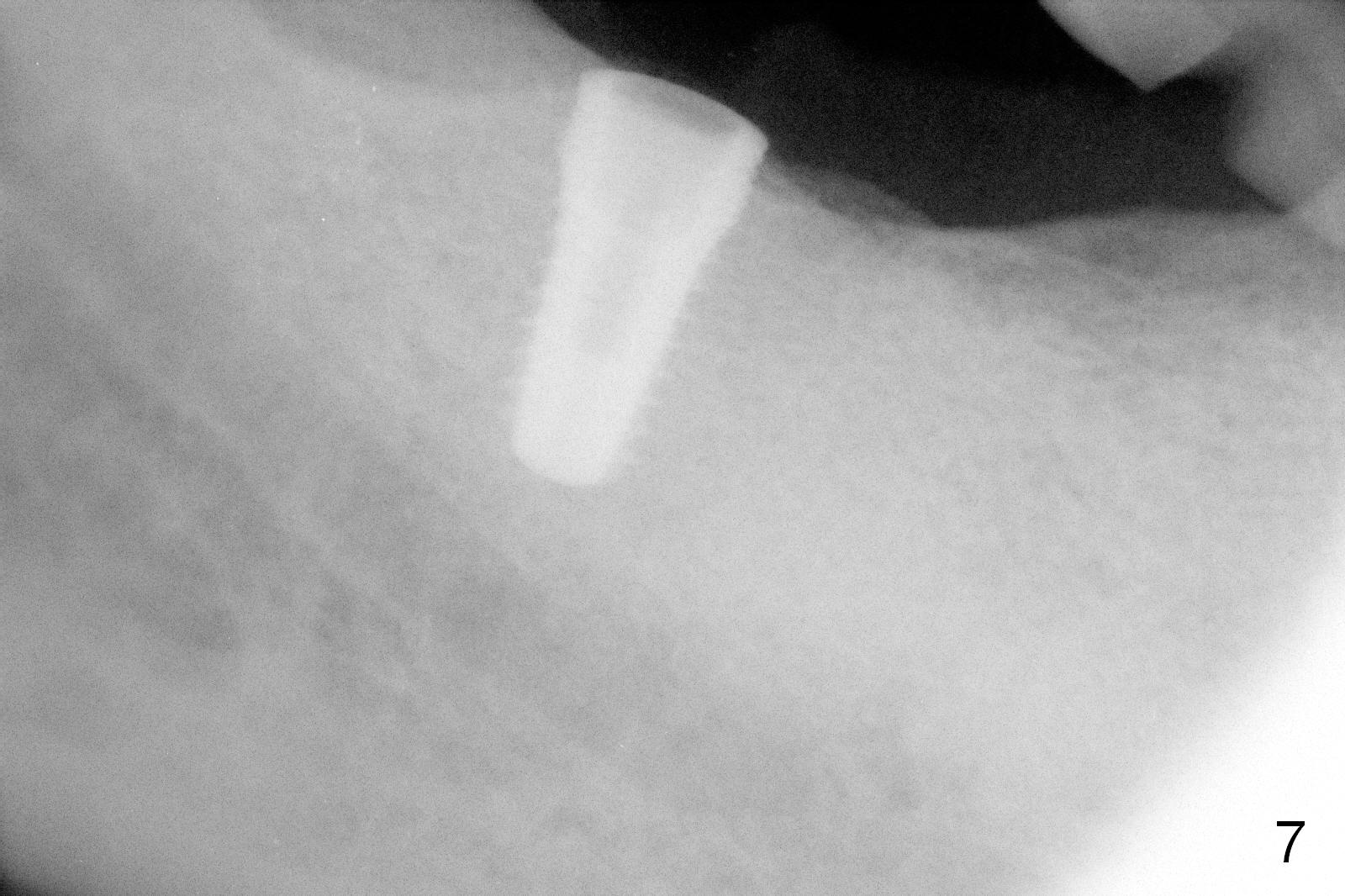
 |
 |
 |
%20(abutment%20trimmed).jpg) |
 |
 |
 |
|
Place Implants as Deep as Possible
Both the teeth #28 and 31 are residual roots. The former has severe buccal gingival recession (Fig.1 <). PAs taken prior to implant placement show that the mesial (M) and distal (D) crests are not even (Fig.2,3). When a 4.1x12 mm submerged implant (Fig.4 I) is placed 1 mm apical to the distal crestal bone, there is substantial buccal thread exposure, which is covered by bone graft and collagen membrane. The latter are stabilized in place with an immediate provisional after abutment (A) placement.
At the site of #31, drills with 12 mm stopper are used at the gingival level (Fig.5). It is assumed that the osteotomy depth is 10 mm, while the gingival thickness is ~ 2 mm. When a 5x10 mm implant is placed initially, there are a few threads coronal to the crest (Fig.6 >). After osteotomy depth adjustment, the implant is placed deeper (Fig.7). In fact it is still not enough, since the tooth #2 is severely supraerupted. To restore at #31, it appears necessary to intrude the tooth #2. Ortho starts using #28 as an anchorage 5 months postop.
Return to Premolar,
Molar Immediate Implant,
Implant & Ortho
Xin Wei, DDS, PhD, MS 1st edition 02/11/2016, last revision 08/11/2016